If you’re a B2B marketer, you know that the landscape is constantly changing. As we head into the mid of 2023, it’s important to understand which marketing channels will be most effective in reaching B2B buyers.
To reach your desired audience and drive sales, you can use a combination of various marketing approaches including content marketing, social media marketing, email marketing, referral programs, and personalized video marketing.
Business-to-business purchases tend to take a considerable amount of time when compared to Business-to-consumer ones.
Today’s B2B buyers are more informed than ever before. To attract customers, your focus should be on guiding them throughout their experience with your brand across the customer journey. This way, you can make sure that ideal customers always remember your brand.
Today, you’ll learn about the best marketing channels for B2B buyers in 2023. You’ll also discover how important personalized video marketing is for businesses that have a segmented audience and want to stand out.
Understanding Your Target Audience In B2B Marketing
Before we dive into the top marketing channels, it’s important to understand your target audience. B2B buyers have unique needs and pain points, so it’s crucial to tailor your marketing efforts accordingly.
To effectively market to B2B buyers, you must first create buyer personas and understand the buyer’s journey. This type of marketing can be challenging since businesses have different needs and decision-making processes than individual consumers.
Then, to effectively market to other businesses, then, it’s important to have a deep understanding of your target audience.
The following are the steps I recommend.
Identify the Target Audience
Before you can understand your target audience, you need to identify who they are. This involves researching the industry you are targeting, segmenting the market, and creating buyer personas.
Let’s cover this step by step.
Research the Industry
Researching the industry you are targeting will give you a better understanding of the challenges and opportunities businesses in that industry face.
You can learn about industry trends, common pain points, and the competitive landscape. This information will help you tailor your marketing messages to the needs of your target audience.
Segment the Market
Segmenting the market involves dividing your target audience into smaller groups based on shared characteristics.
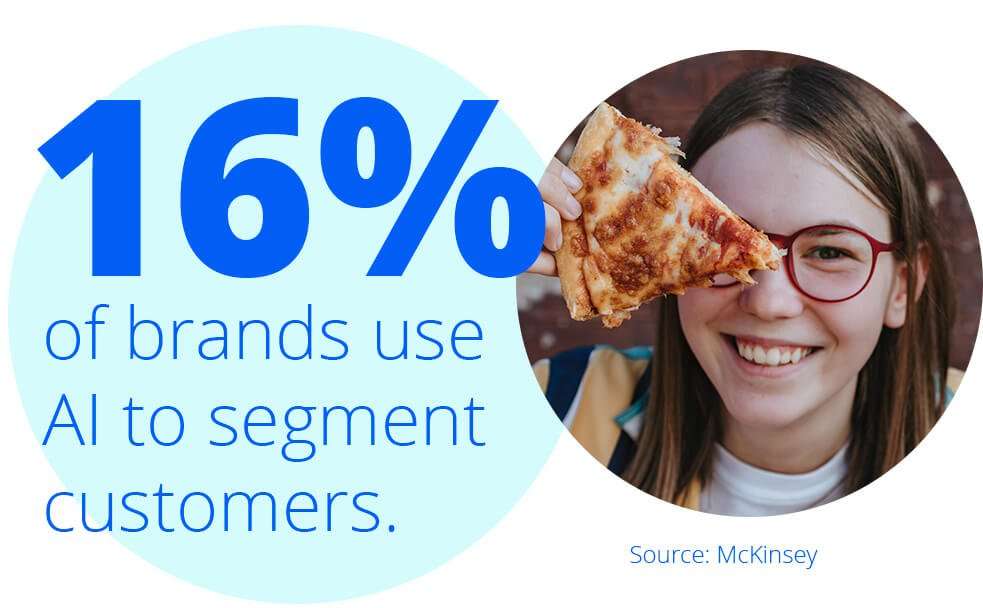
These characteristics can include company size, industry, location, and more. By segmenting the market, you can create more targeted marketing messages that resonate with each group.
These are some of the easiest ways to segment your market:
- Demographic segmentation is a widely employed method of segmentation. Conduct an analysis of customer demographics using criteria such as age, income, family size, race, gender, occupation, education, and nationality.
- Examine the skills and knowledge possessed by your customers, and how they utilize them while engaging with your brand, employees, products, and services.
- Classify your customer base. Do this based on their preferences regarding your brand, products, services, and interactions with your team.
- Examine the behavioral patterns and decision-making procedures of your customers, taking into consideration their way of life, purchasing habits, timing, and rationale.
- Psychographics is a method of market segmentation that considers the lifestyle, personality traits, values, opinions, and interests of consumers.
- Assess the usage patterns of your product among customers: Is it aligned with your initial expectations? What are the circumstances and social dynamics surrounding its usage?
- Understand their purchasing behavior. To figure out how customers buy your products, it’s vital to study their habits like how they spend, when they tend to buy, what gadgets they use, how they react to offers, and other significant aspects.
Analyzing customer behavior is a big one that will always help you segment your audience. It involves understanding how your target audience interacts with your marketing messages and your product or service.
This includes analyzing website traffic, email open rates, and customer feedback. By analyzing customer behavior, you can identify areas for improvement and tailor your marketing messages to better resonate with your target audience.
Create Buyer Personas
To truly understand and effectively target your audience, crafting buyer personas is crucial. These in-depth profiles of your perfect customers provide invaluable insight into their wants and needs.
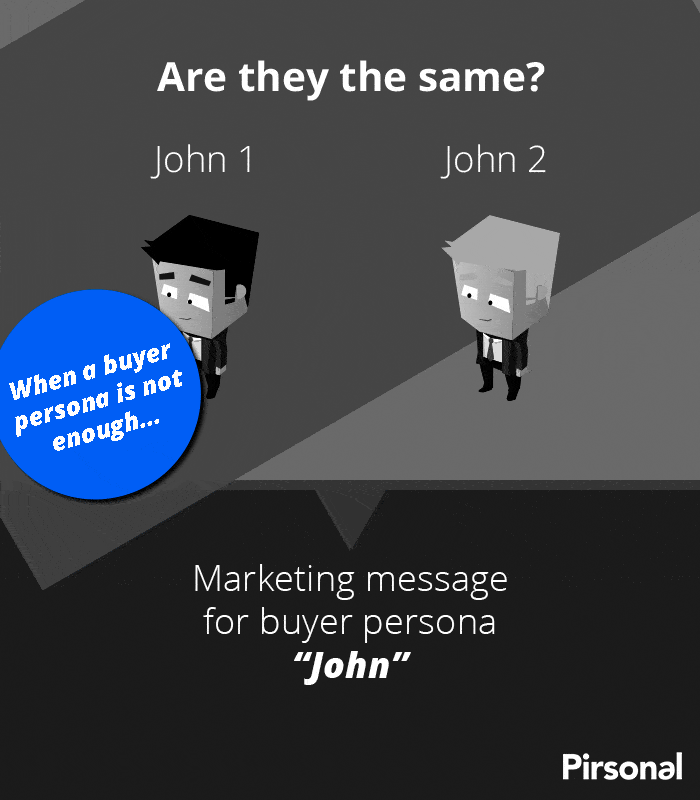
These profiles should include demographic information, job titles, pain points, and more. By creating buyer personas, you can better understand the needs and motivations of your target audience.
If you want to take this one step further, create what I call augmented buyer personas.
An augmented buyer persona is a detailed description of a customer that includes information from different sources like their online behavior, purchase history, and social media activity.
We use demographics and interests along with other information to create a full understanding of our B2B prospective customers, called a buyer persona.
By using this detailed profile, businesses can create products, services, and marketing messages that are customized to the customer’s specific needs, preferences, and interests.
This helps businesses better understand their customers and improve the customer experience.
One of the key benefits of creating buyer personas is that you can clearly identify and articulate their core pain points.
Identifying the pain points of your target audience involves understanding the challenges they face and the problems they need to solve.
By understanding these pain points, you can create marketing messages that address these challenges and position your product or service as a solution.
To learn how to automatically segment your audiences based on buyer persona and through email marketing, watch the following video now:
Tailoring Your Marketing Strategy to Target B2B Customers
Once you have a deep understanding of your B2B target audience, the next step is to tailor your marketing strategy to their needs.
Tailoring your marketing strategy to target B2B customers involves understanding the unique needs and pain points of businesses and developing a strategy that addresses them.
This can include creating personalized content that speaks to the specific challenges faced by individual business buyers, choosing the right channel to target decision-makers, and developing a strong value proposition that speaks to the ROI of your product or service.
However, keep in mind that ROI has different perceptions depending on the type of buyer, decision-making capabilities, and organization.
Often, B2B buyers don’t measure ROI from a financial perspective. For instance, they measure value from a brand awareness perspective, or by the amount of time they’ll save.
Surely, these are perceived values that can be quantified. But in my experience, many B2B purchases take place without a concrete numeric value.
This is why understanding the buyer persona is crucial. In fact, there could be many of them involved in the buying journey. The reason for this is that in B2B there are often many decision makers.
Your marketing messages need to speak to different stages of the B2B customer journey, from initial awareness to final purchase. In the following video, I explain how to do this:
Just keep it in mind.
Then, by tailoring your marketing strategy to B2B customers, you can position your brand as a trusted partner and drive more effective sales and marketing outcomes.
Keep in mind that in B2B marketing, having a consistent brand identity can also help you better connect with potential customers at every stage of the funnel.
Let’s see how.
Personalizing Marketing Messages
Personalizing marketing messages involves creating content that speaks directly to the pain points and needs of your target audience.
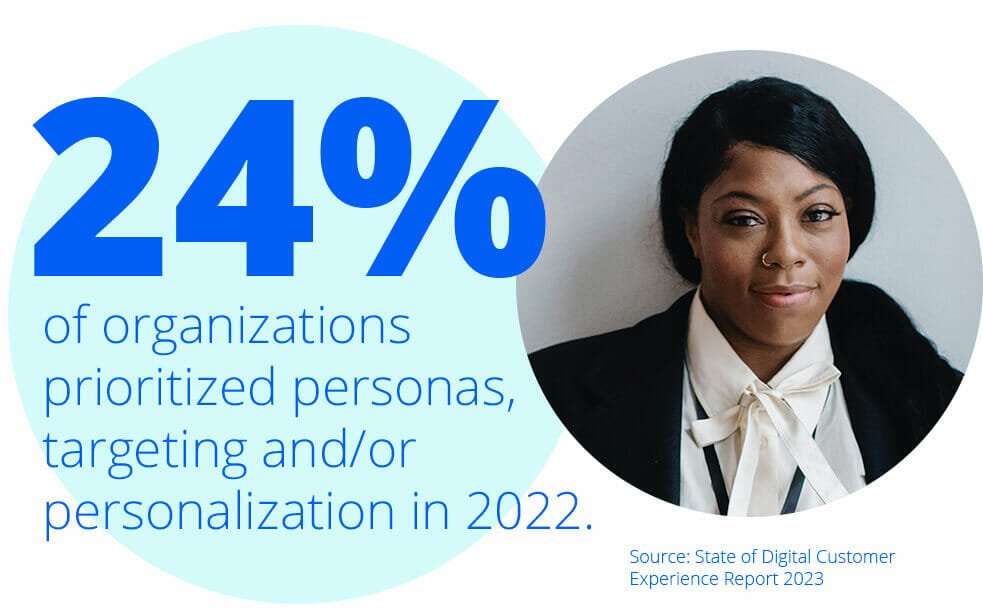
This can include personalized emails, dynamic landing pages, and targeted ads. By personalizing your marketing messages, you can increase engagement and conversion rates.
To learn how to succeed with personalized marketing, watch the following video now. In the video, I explain step-by-step how to create a personalized marketing strategy to help you engage with leads and customers with personalization.
Choosing the Right Channels
Choosing the right channels involves selecting the marketing channels that are most effective for reaching your target audience.
This can include social media, email marketing, content marketing, and more. By selecting the right channels, you can maximize the impact of your marketing messages.
Creating Relevant Content
Creating relevant content involves developing content that addresses the pain points and needs of your target audience.
This can include videos, blog posts, whitepapers, case studies, and more. By creating relevant content, you can position your brand as a thought leader and increase engagement with your target audience.
Now, let’s go over the main marketing channels B2B buyers are paying attention to in 2023. Not every channel will be a good fit for you. In fact, chances are you are already using some of them.
The Top Marketing Channels for B2B Buyers in 2023
So, what are the top marketing channels for B2B buyers in 2023? Let’s take a closer look.
1. Content Marketing
Content marketing will continue to be a top marketing channel for B2B buyers in 2023 and for the years to come. However, with the proliferation of AI tools like ChatGPT and automated content creation, quality is your best asset.
Modern buyers will soon need more generic marketing content, as they are more educated than ever.
Then, by creating genuine, detailed, informative, and engaging content from an experience standpoint, B2B companies can attract potential customers and establish themselves as thought leaders in their industry.
Real white papers, blog posts with clear steps, and case studies that illustrate how other organizations succeeded are all effective types of content for B2B marketing.
The point is, make sure to establish your brand as a source of quality content. Create marketing content and collateral that is unique, hard to replicate, and that sustains potential buyers across their journey with your brand.
2. Email Marketing
Email marketing is still the main communication channel. In fact, the majority of our clients use it for B2B marketing communications. I do see more B2C brands increasing the use of channels like WhatsApp, SMS, and direct mail.
Similar to content marketing, email marketing needs a big quality upgrade to be effective. Most businesses need to refresh the way they engage with leads and customers through this channel.
By sending targeted and personalized emails to potential customers, B2B companies can build relationships and move prospects through the sales funnel.
These personalized emails can really effective if the marketing leadership collaborates and gathers insights from sales reps and account executives.
This will help them contextualize the information in a way the aligns with the tone, personas, and concerns they see on a daily basis.
Strategically personalizing your email marketing efforts requires a totally different mindset from the one most marketing teams are used to.
To illustrate, take a look at the following screenshot of a personalized email. In the image, I highlighted the merge or personalization tags.
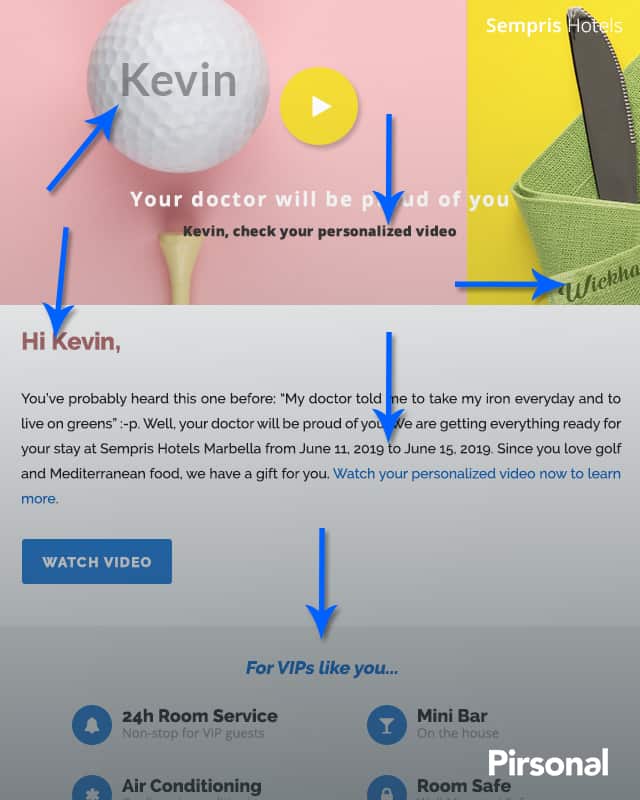
To exaggerate things, modern buyers in B2B already know their names. Using the first name of a lead or customer in an email is still really effective.
As someone who has worked on personalized marketing for over a decade, analyzing audiences and campaign performance, I believe marketers can do a much better job of improving engagement.
Successful personalized emails use customer data creatively. These types of emails help readers understand the information in a better way within their audience’s context—individually.
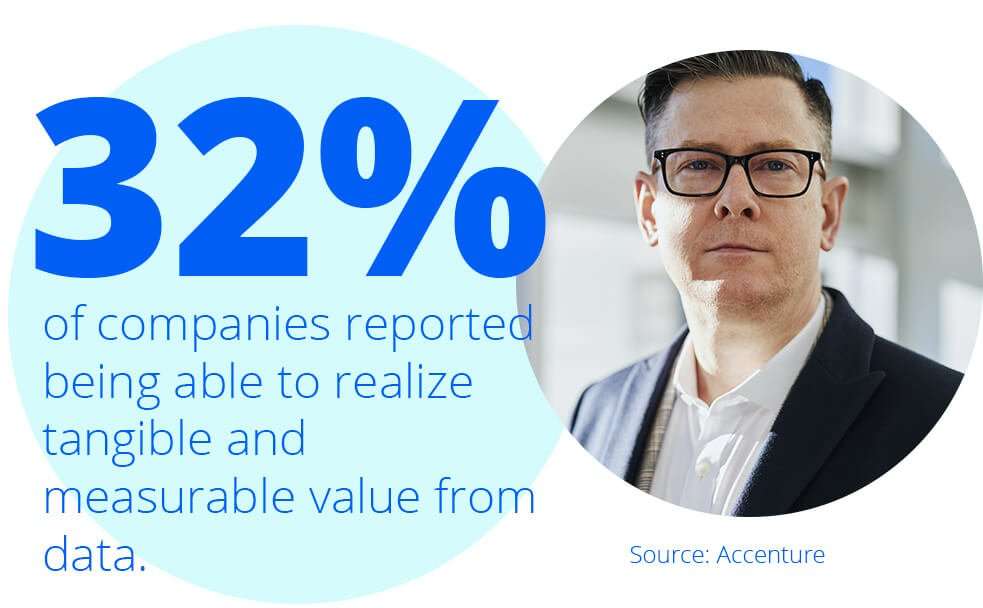
This requires the understanding of having data structures in place that can help you access, interpret, and use customer data in your email campaigns.
3. Social Media Marketing
It’s clear that AI will continue to transform the landscape of social media marketing. AI chatbots will get better and be used more on social media. This will help businesses give better customer service that’s more tailored to each person.
AI can assist your marketing team in analyzing large amounts of data, which will help them gain a better insight into your target market.
As a result, you can develop social media strategies that are more effective and improve targeting and personalization when you communicate with prospective customers through social media channels.
Along with personalization, localization is making a huge difference in social media marketing. It allows you to create content that is culturally relevant to a particular area or audience.
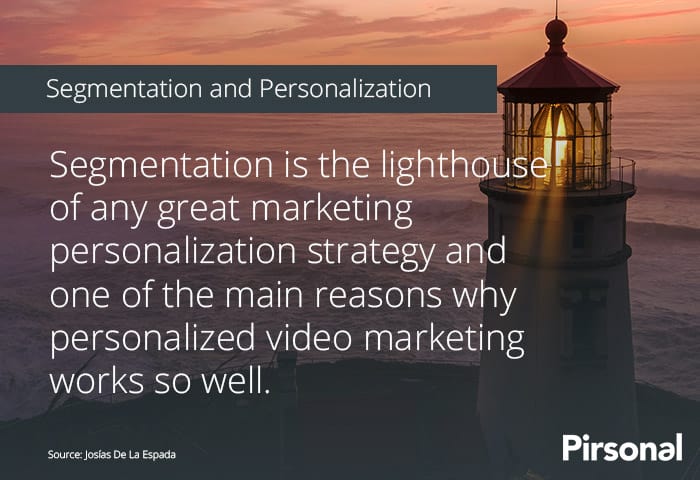
With AI-powered social media tools, businesses are able to automate many social media marketing tasks, freeing up time and resources for more strategic initiatives.
Overall, the continued evolution of AI will likely have a profound impact on social media marketing in the coming years, enabling businesses to reach and engage with their target audiences in more effective and meaningful ways.
4. Video Marketing
Video marketing has become increasingly important in B2B marketing. However, something to keep in mind as an experienced marketer is that almost every competitor has access to easy and cost-effective video creation.
The vast majority of marketers (94%) say that video helps their target audience understand their offering better. With this, marketers that want to leverage the power of video in their digital marketing strategies need to level up their game.
Using videos in marketing needs to adapt to what your audience needs at every stage of the buying process. This means that you need to map the customer journey—not just create videos because you have them in your marketing budget.
If you already use video ads in your marketing stack, consider producing dynamic video ads to make the content relevant to individual potential buyers.
In the following video, I explain how to strategically create and use video, taking the customer journey and the stages into account.
In this video, you’ll discover that considering the four dimensions of CX is more impactful for creating B2B videos.
There are four dimensions of the customer experience that impact your digital marketing and video strategy:
- Entertainment
- Informativeness
- Social presence
- Sensory appeal
Every stage of the buying cycle requires a different approach and type of video. Yes, I know this is a more complex approach, but it is also far more effective.
In this article, I explain each of these CX dimensions and how they impact your video marketing tactics.
Here you have a summary of the types of videos that work best correlating the CX dimension, type of video, and distribution channel:
| Customer Experience Dimension | Information Experience | Funnel Stages | Type of Videos | Distribution Channels |
| Informativeness | Cognitive | Interest, Consideration | How-to, explainer videos, interactive videos | YouTube Channel, Knowledge Base, Blog |
| Entertainment | Affective | Awareness, Loyalty, Advocacy | Social media videos, explainer videos, video ads | Facebook, YouTube, Blog |
| Social Presence | Social | Consideration, Intent | Social media videos, customer testimonials | Facebook, YouTube, Twitter, TikTok |
| Sensory Appeal | Sensory | Consideration, Intent, Purchase | personalized videos, interactive videos | Email, SMS, WhatsApp, Landing Page |
Make sure to watch it until the end to learn how to create a video marketing strategy to engage with B2B buyers.
By creating engaging and informative videos, B2B companies can connect with potential customers and showcase their products or services.
But you also know that every single company deals with what I call saturated audiences. Simply, these are individuals like you and me that are busy and constantly bombarded by irrelevant marketing and sales impacts they ignore.
So, even if video is king, we need to remember that the majority of customers prefer personalized messages. Then, when you communicate with leads and customers on a one-to-one basis, even if you do it at scale, you should consider video personalization.
Personalized video marketing, in particular, is a powerful way to engage with prospects and move them through the sales funnel. It is also an effective way to engage with customers, increasing engagement, lifetime value, and sales.
5. Personalized Video Marketing
Personalized video marketing is an effective way to reach B2B buyers individually. And, no worries, it can be automated. It is a trend that is gaining popularity in the B2B space.
Personalized video creation is one of the video marketing trends that involves creating tailored videos for specific target accounts or individuals within those accounts. This type of marketing can be especially effective in the B2B space, where the buying process is often complex and involves multiple decision-makers.
By using data to personalize your messaging, you can increase engagement and drive conversions. Personalized video marketing can also help you stand out from your competitors and establish a more personal connection with your audience.
Businesses can create personalized videos from any digital data source, such as a CRM, spreadsheet, marketing automation tool, or API.
Here you have some personalized video examples by B2B brands.
This personalized video explains financial incentives.
This personalized video is used in a sales process to explain a proposal.
This personalized video helps corporate employees understand their pension plans.
Many marketers and agencies find personalized video marketing intimidating. And there are a few reasons why this happens.
In our experience, for many years, video personalization was not accessible from a budget perspective. Mostly used by large organizations to increase engagement, agencies and brands focused on the “WOW factor” rather than on the strategy.
Many personalized video platforms have problems with scaling, speed, and security compliance. Or require complex, long, and expensive implementations most organizations can’t afford.
So, what we’ve seen is that most video personalization platforms don’t adapt to the dynamic of marketing teams or agencies helping them. As a result, projects get truncated and audiences stay unengaged.
Pirsonal is a personalized video platform that can be customized to fit the needs of marketing teams and agencies. It doesn’t matter how big their audience is or how much they know about video marketing and personalization. Pirsonal will adjust to their workflow.
With Pirsonal, you can create personalized videos that engage your audience through data-driven strategies at any scale.
Added to this, with self-service solutions and a hands-on approach, we help teams succeed when they embrace personalized marketing for the first time.
B2B businesses can make stronger connections with potential clients and increase their chances of success by generating personalized videos that speak to their specific concerns and interests.
How to Create Personalized Videos for Your Marketing Campaigns
So, how can B2B companies create personalized videos for their marketing campaigns? Here are some tips:
- Use video platforms that offer self-service tools but also hands-on help to help your team succeed based on your needs. Basically, let the platform adapt to your needs. This is what we do at Pirsonal.
- Add personalized elements to your videos, such as the prospect’s name, company name, and other relevant information. But make it relevant. Use interactive content to enhance viewer engagement and clarify each aspect of your video, supporting the specific action you want your audience to take.
- Create videos that are tailored to the prospect’s needs and pain points. This requires good knowledge of your audience. For this, I recommend using augmented buyer personas as they take into account customer data, their context, and their buyer persona.
I wrote an article that explains the main mistakes you should avoid when creating a personalized video marketing campaign. There, you’ll find what we’ve seen over the years over and over and how to avoid mistakes. Make sure to read the article now to learn how to actually succeed.
If you’re interested in personalized video marketing for B2B, my team and I are available to guide you and help with the evaluation. Contact us now! We’ll be thrilled to help!
6. Referral Programs
Referral programs are a great way to leverage the power of word-of-mouth marketing. Word-of-mouth is a great marketing strategy that can happen on social media or in private conversations between decision-makers and their peers.
By incentivizing your current customers to refer new customers to your business, you can generate high-quality leads and increase your customer base.
Remember that in B2B marketing, decision-makers need social proof in the form of case studies, examples, and whitepapers. This will help you build momentum and will facilitate your referral program.
Referral programs are also a cost-effective way to acquire new customers, as you only pay for the leads that result in a sale.
6. Direct Mail Marketing
It is worth noting that traditional marketing methods like direct mail can still be effective in B2B marketing. Businesses can make a stronger connection with their target audience by sending well-crafted and personalized direct mail to decision-makers.
This can help them stand out from the digital marketing clutter. Direct mail marketing can be aligned with your digital strategy as well.
For example, you can add QRs, use phone numbers, or personalized landing pages to track response rates.
For example, the following image shows an example of a direct mail piece with a QR. The link behind the QR could lead to a personalized landing page with a video also tailored to the person.
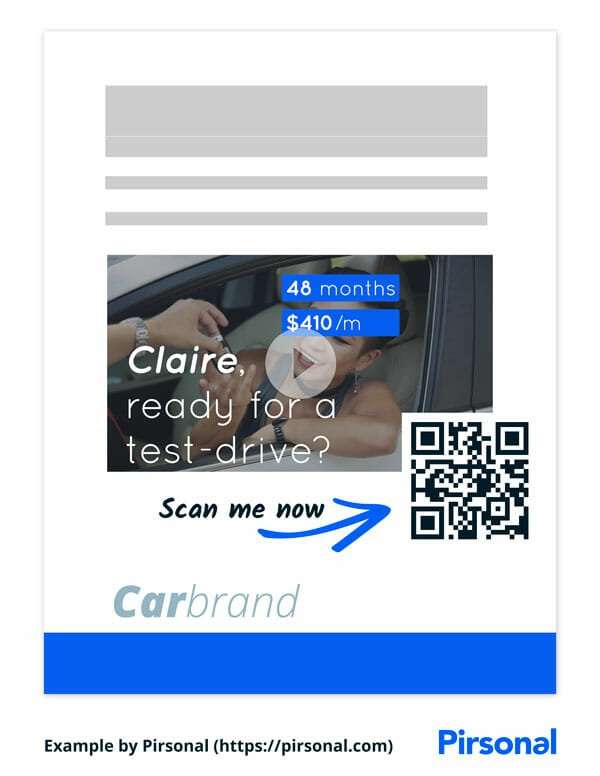
7. WhatsApp Marketing
Another emerging channel to consider is WhatsApp marketing, which has become a popular messaging app for businesses to communicate with their customers.
With over 2 billion users worldwide, WhatsApp offers a unique opportunity for businesses to connect with B2B customers in a more direct and personal way.
WhatsApp marketing can include sending targeted messages and updates to customers, providing customer service, and even conducting transactions through the app.
As with any marketing channel, it’s important to evaluate the specific needs and preferences of your target audience before investing time and resources into a particular strategy.
By understanding your audience and tailoring your approach to their preferences, you can maximize the effectiveness of your B2B marketing efforts across a range of channels, including traditional methods like direct mail and emerging digital channels like WhatsApp.
Measuring the Success of B2B Marketing
Measuring the success of B2B marketing involves setting SMART goals, measuring key performance indicators (KPIs), and making adjustments to the marketing strategy.
Setting SMART Goals
Setting SMART goals involves developing specific, measurable, achievable, relevant, and time-bound goals for your marketing efforts.
This can include goals related to website traffic, lead generation, and sales revenue. By setting SMART goals, you can track progress and measure the success of your marketing strategy.
Measuring Key Performance Indicators (KPIs)
This can include metrics related to website traffic, lead generation, and customer acquisition costs. By measuring KPIs, you can identify areas for improvement and make data-driven decisions.
Sticking to these KPIs will help you optimize your marketing performance and revisit your strategy in periods of 3, 6, and 12 months. The reason this is key is that B2B marketing has become an extremely competitive landscape.
Making Adjustments to the Marketing Strategy
Making adjustments to the marketing strategy involves using the data you have collected to refine your marketing messages, channels, and content.
By making adjustments, you can improve the effectiveness of your marketing strategy and drive better results.
Conclusion
In 2023, B2B companies must use a combination of marketing channels to effectively reach their target audience. Content marketing, email marketing, social media marketing, video marketing, and personalized video marketing are the top channels to consider.
Personalization is particularly important, and B2B companies can create personalized videos to boost engagement across the customer journey.
By creating personalized content, B2B companies can build stronger relationships with their prospects and increase the likelihood of conversion. Which your sales team will love!

